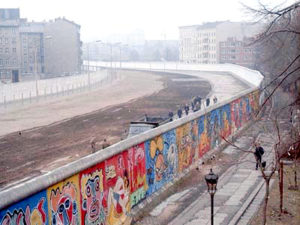
Chandra Clarke, one of ARU’s Creative Writing PhD Research Students and a student member of CSFF, is nearing the end of her PhD journey, getting ready to sit her viva later this spring. Professor Sarah Brown, intrigued by Chandra’s take on science fiction, conducted an interview to discuss Chandra’s research, her take on SF, and her novel, Replay.
Sarah Brown: What first sparked your enthusiasm for science fiction?
Chandra Clarke: I’ve been a science fiction fan for as long as I can remember. Some of my earliest, fondest memories are about me sneaking part-way down the stairs to watch when my parents had Star Trek repeats on the television, or going to see the very first Star Wars film when I was about five or six. I wasn’t into doll houses so much as I was into space ships.
SB: Can you tell us a little about how you developed the idea for your novel?
CC: I’ve long been fascinated by instances where the invention of a particular technology has enabled a number of completely unexpected uses and whole new ‘ecosystems.’ For example, in the early 1970s, some university mainframes were used to play ‘multi-user dungeon’ games, or MUDs. These games evolved into ‘massively multi-player’ games such as Eve Online and World of Warcraft, which have sophisticated virtual economies, where people buy and sell digital items using the in-game currency. These have in turn created surprising ripples in the real economy, wherein residents of developing countries have gained full-time employment ‘farming’, or gathering the currency of a game or special items to sell to wealthier players for real money.
In my novel, a neuroscientist invents a technology to capture and replay the feeling of ‘flow’ on demand. By flow, I mean that peak performance state you can sometimes get into when working on something creative, or when you’re at the top of your game athletically. She wants to be able to harness that state to unleash humanity’s full potential on our big, intractable problems. Unfortunately, that technology can also capture and replay other brain-body states; her prototype is stolen, duplicated, and put to all sorts of unintended uses, both good and bad. My book traces how that turns the lives of several people upside down.
SB: There’s a particular challenge in creating a convincing near-future setting. Can you tell us something about the thinking behind your version of Toronto?
CC: There are at least three challenges that I can think of when writing near-future settings. One is trying to get the timeline out just far enough that you won’t be superseded by events happening right now. Technology changes so quickly these days that there’s a real danger that what you’re writing about will actually be history by the time you get published. Two has to do with the era we find ourselves in: politically and socially, these are strange times! How can a fiction writer even begin to compete with some of the headlines we have been reading lately? And finally, any credible near-future setting must address climate change in some way. It’s very hard to see how that will play out.
SB: Many of today’s visions of the future seem dystopian, if not post-apocalyptic. Yet yours is comparatively optimistic. Was this a conscious decision?
CC: Very much so. I understand the need for cautionary tales and dire warnings, but I think that there is a pretty hard limit on how much that sort of thing will motivate people to change. Narratives that are dark and hopeless tend to generate apathy, rather than action.
By the same token, a lot of the rhetoric around the environment is focused on having to give up things we love to have or love to do. No one who has nice things really wants to contemplate losing them, and those who haven’t had a chance to enjoy a comfortable Western lifestyle won’t want to give up hoping for that either. So, I tried to imagine a future where we were greener, more efficient, had more time, better support networks, cleaner air, healthier existences. It’s a question of re-framing and looking to what we will gain rather than what we might lose. I wanted to give something for readers to strive towards.
SB: Do you think optimistic science fiction has the capacity to shape a more positive future for the world?
CC: I do. It’s relatively easy to criticise and find fault. It’s much harder to develop solutions, especially for those big, multi-faceted problems. I think it’s up to us, as writers of speculative fiction, to start inspiring readers. What does a post-carbon world look like? Is there a better system of government? How do we inoculate the voting public against disinformation campaigns? These are just some of the questions facing us. We need to start proactively working toward the futures we want, rather than just careening from one crisis to the next.
In her speech at the 2014 National Book Awards, Ursula K Le Guin said, “We live in capitalism, its power seems inescapable – but then, so did the divine right of kings. Any human power can be resisted and changed by human beings. Resistance and change often begin in art. Very often in our art, the art of words.”
If that’s not a call to arms, I don’t know what is. But I hope I have begun to answer that call.
You can read more about Chandra and find links to her other work here.


